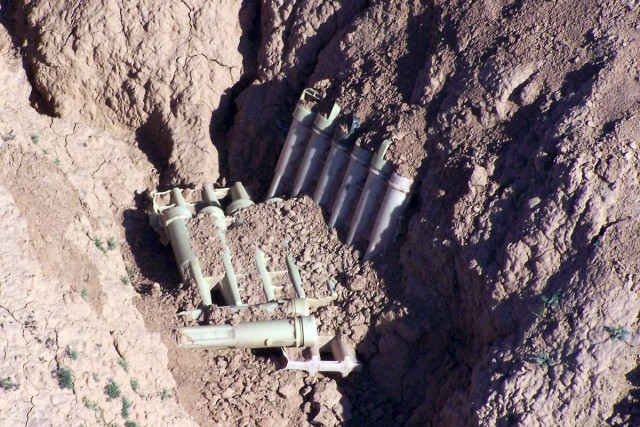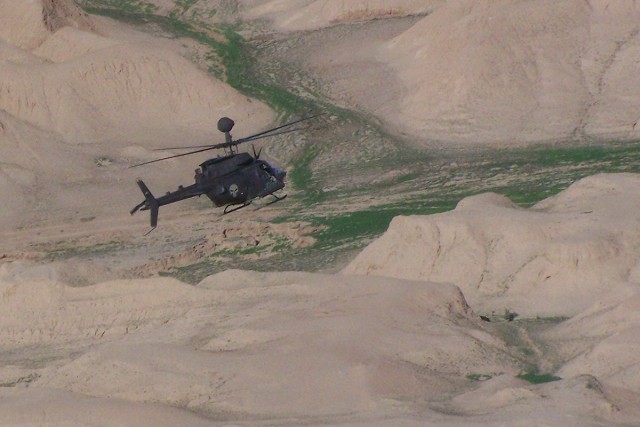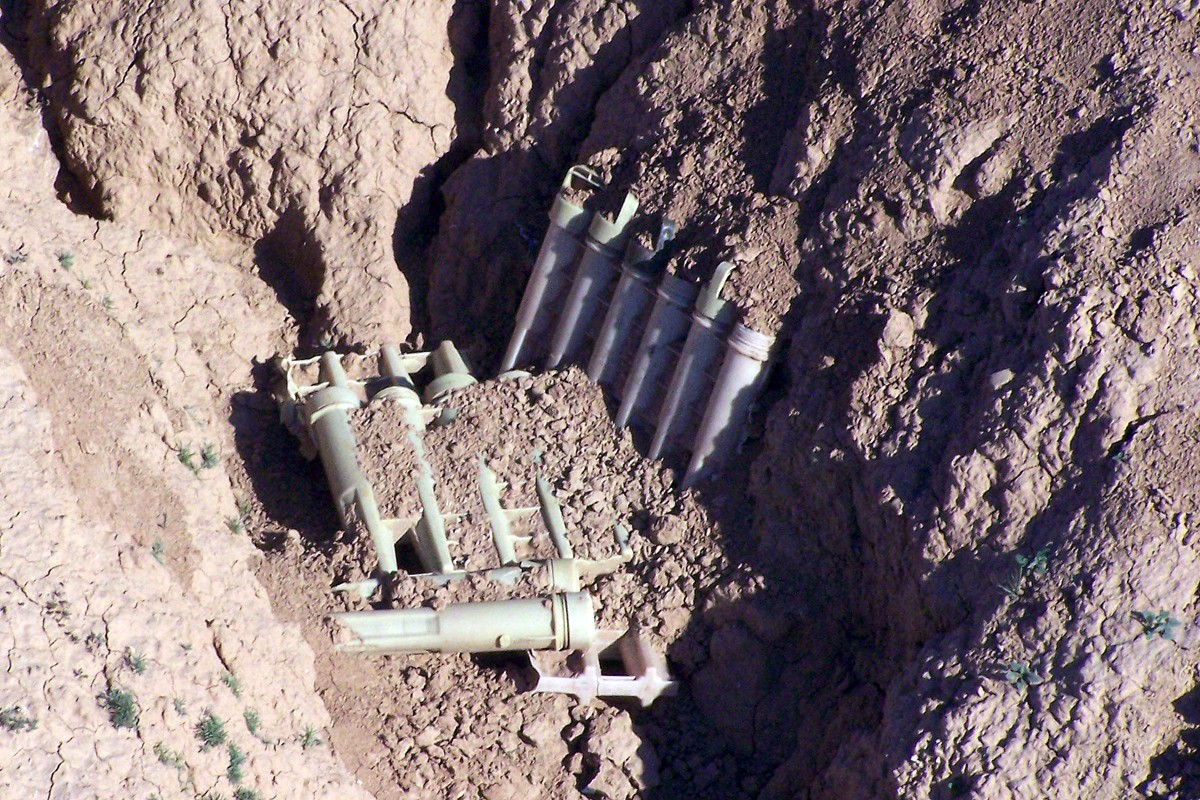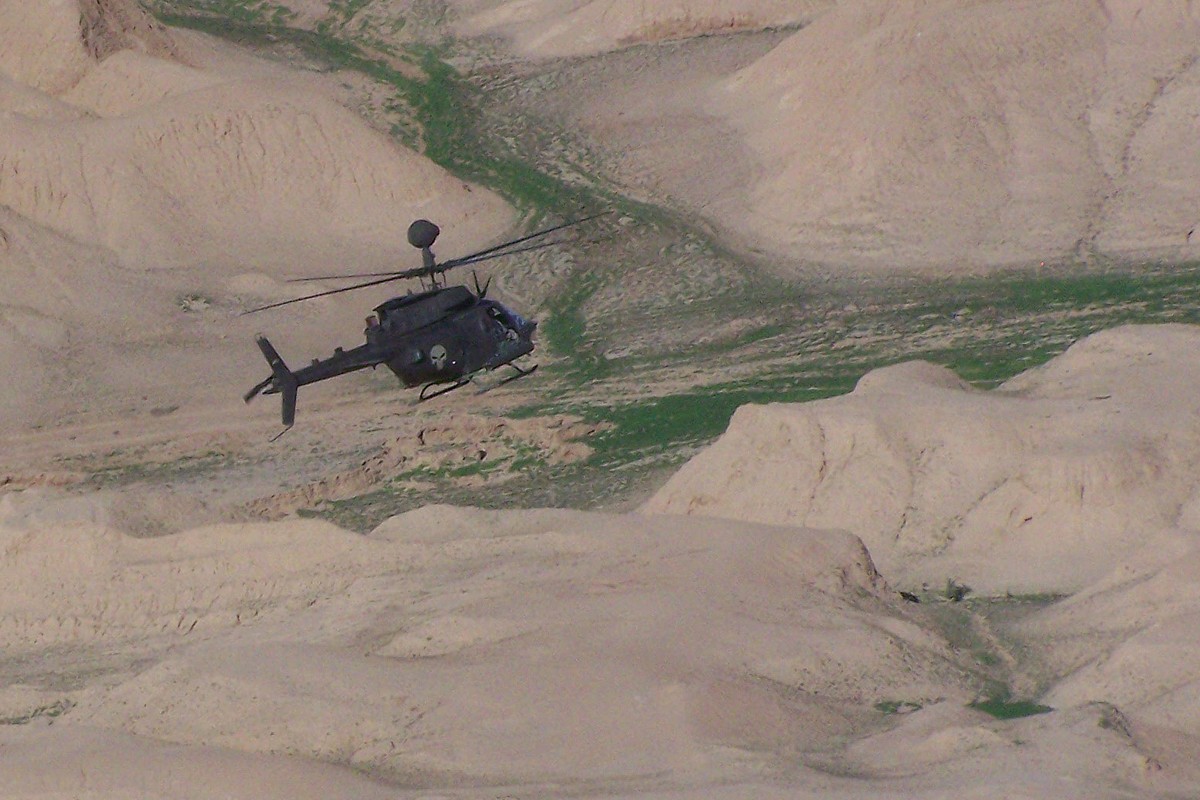CONTINGENCY OPERATING BASE SPEICHER, Iraq - The 6th Squadron, 6th Cavalry Regiment, 10th Combat Aviation Brigade's C Troop recently provided overwatch security and aerial reconnaissance for two 25th Infantry Division deliberate operations. During Operation Kamehameha II January 1-9, the OH-58D Kiowa Warrior teams supported ground elements from the 3rd Squadron, 4th Cavalry Regiment, 3rd Brigade, 25th ID as they operated in the countryside around Joint Base Balad. "Kamehameha II was a counter indirect-fire mission," explained Chief Warrant Officer 2 Aaron Walker, a C Troop instructor pilot who flew during the operation. "JBB has been receiving a lot of indirect fire, and our mission was to go down there and provide reconnaissance and area security while the ground forces cleared specific areas." Pilots flew overhead and provided aerial surveillance and security while ground troops cleared objectives, leading to the discovery of several mortar rounds, mortar tubes, rockets, and anti-coalition and anti-Iraqi security forces propaganda. "Kamehameha II was definitely a success," said Maj. Mark Gillespie, 6-6 Cav. operations officer. "We were able to disrupt the enemy and decrease the indirect fire against JBB, both during and after the operation." Gillespie attributed the operation's success to the combination of ground forces and air assets. "The ground guys do a lot of work, humping around and clearing objectives," he explained. "They risk a lot by what they do, so we serve as a deterrent by operating overhead. We have achieve effects on the enemy when we do combined air and ground operations. They don't like to act when we're operating together." Kamehameha II came on the heels of the successful Operation Kamehameha I, during which C Troop supported 3-4 Cav. as they searched for weapons caches near Balad in mid-December. "The objective of the ground guys was twofold: to find cache sites, or buried munitions that the enemy is using to influence us on the routes, and to disrupt enemy movement throughout the region," Gillespie said. "Our main purpose during that mission was to provide aerial security and reconnaissance as ground forces were en route to various objectives." During the four-day operation, the combined teams uncovered several caches containing numerous 120mm rounds, mortar rounds, small arms, AK-47s, a belt-fed machine gun, various ammunition loads, an unexploded IED, and even, surprisingly, human remains. "They had obviously been there for a while," Gillespie said of the uncovered bones. "And given the state of some of the munitions we found, I would say that some of the caches had been buried for a long time, as well." Everything the teams found was subject to "sensitive-site exploitation," then turned over to the proper authorities or disposed of on-site by combat engineers operating as part of the ground teams. Gillespie said both operations were part of the normal mission-set for the Kiowa unit. "Security, reconnaissance and light or limited attack is what we do for a living," Gillespie explained. "We support the ground commander through his myriad of missions, whether they are cordon and searches, raids, or counter-cache or counter-mortar." The scout weapons teams support the ground troops by providing overwatch and close-air support. "With foliage and terrain features, sometimes ground forces are unable to see very far," Walker said. "As scout pilots, we take in a sometimes larger picture than they're able to on the ground, and we can save them a lot of travel time and enable them to cover a lot more ground than they could without a reconnaissance team asset." "The ability to see further also offers the 'overwatch' element of security," Gillespie added. "We provide the ground commander an aerial, third dimension perspective for security - kind of an early-warning system," he explained. "If something were coming down the road, we could say 'hey, there's a car coming down the road toward you,' or, 'there's a car driving away,' and we can help direct the ground commander on." If the need arises, Kiowa Warriors can also provide very quick reactionary fires. Fortunately, there were no incidents during either operation that brought ground or aerial forces in contact with the enemy. "So far we've been very lucky - we had no troops in contact during Kamehameha I or II," Walker said, pointing out that the relative calm is a significant difference from when he was deployed here in 2006. "As the dynamic changes in the country from the first time we were here, when battles were going on continuously, to now, where we're more focused on stabilizing the government and building up the Iraqi army and police to take over and provide their own security, things have changed for us a little bit," Walker said. "The frequency of troops in contact and small arms fire - that doesn't occur as much. We still provide the same security and the same reconnaissance, but as this country is built up, there's less going on - which means we're succeeding." Both Gillespie and Walker attribute continued success in the region to operations like Kamehameha I and II. "There's progress anytime we do a mission," Gillespie said. "Not having to shoot weapons or people - to me, that's success. Maybe we don't find any munitions, or catch anyone red-handed...But we have built a relationship with the ground units, and the ground units, in conjunction with the Iraqi units, have developed a relationship with the local population of those areas." Walker agreed. "Both operations had a lot of importance," he said. "I may not have found that handful of stuff today, or made contact with the enemy, but the impact remains the same - the population sees us, and they know we're there to protect the innocent as well as find those responsible for the insurgency. The impact of the operation goes far beyond what we're able to see in the moment."
6-6 Cavalry Kiowas provide over watch, security for Operations Kamehameha I and II
By Sgt. Stephanie van GeeteJanuary 19, 2009




Social Sharing